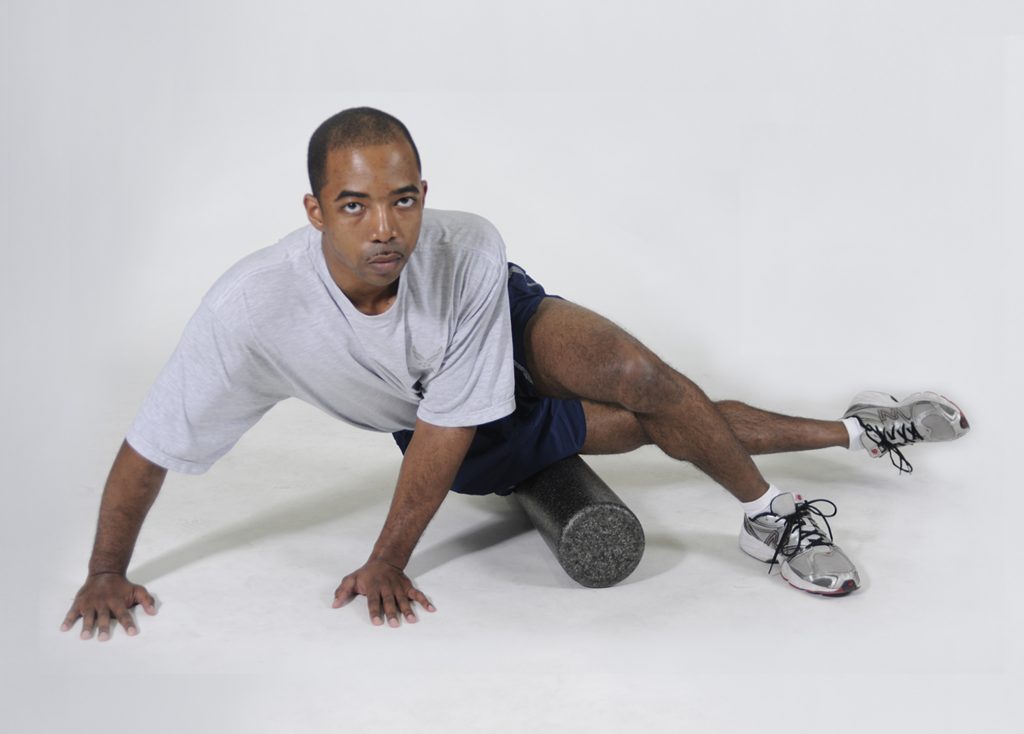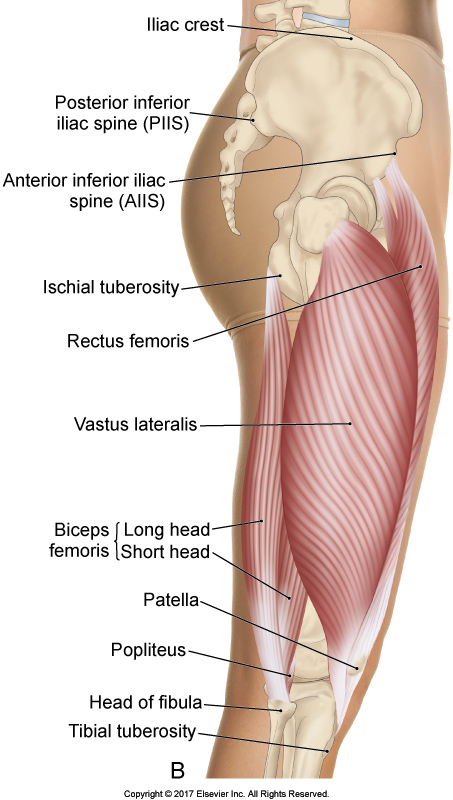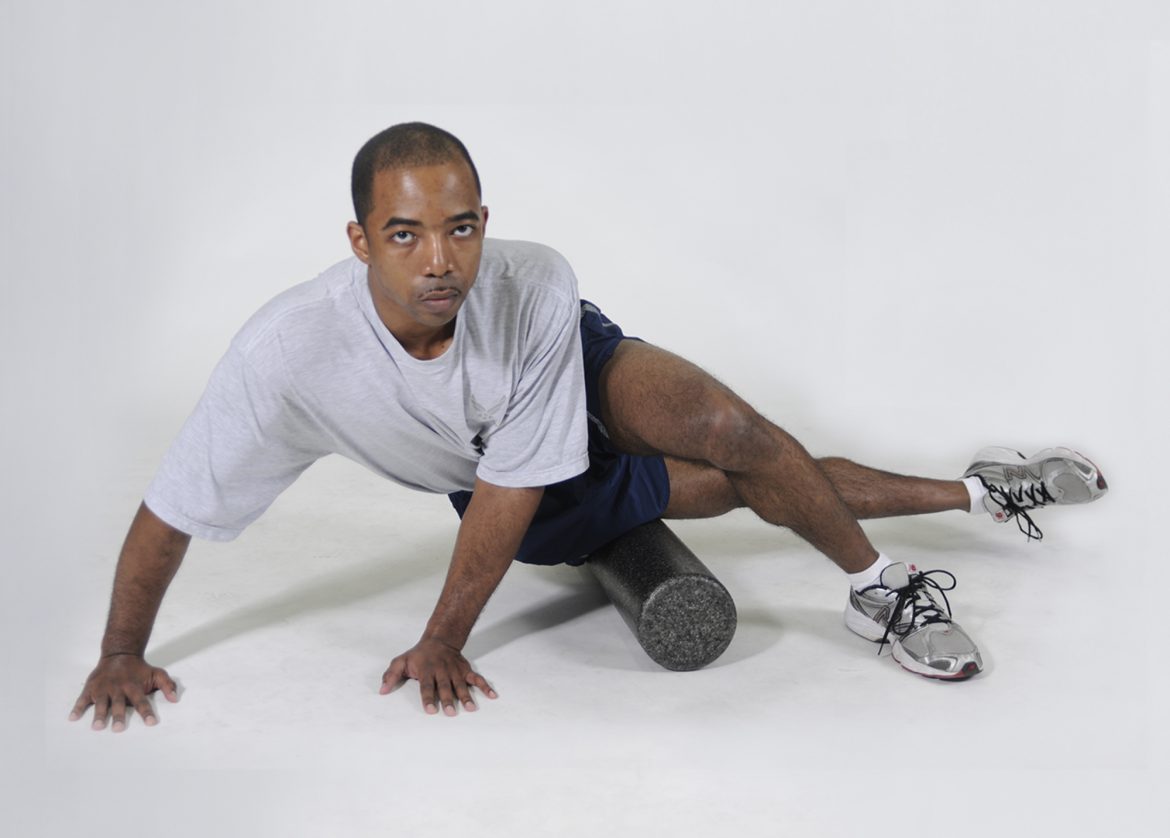Foam Rolling the ITB
 Foam rolling has become a popular self-treatment adjunct to manual therapy. It is prescribed to increase range of motion (ROM) and improve pain tolerance. In particular, foam rolling over the iliotibial band (ITB) is a popular treatment for ITB syndrome, patellofemoral pain syndrome, runner’s knee, and hip bursitis.
Foam rolling has become a popular self-treatment adjunct to manual therapy. It is prescribed to increase range of motion (ROM) and improve pain tolerance. In particular, foam rolling over the iliotibial band (ITB) is a popular treatment for ITB syndrome, patellofemoral pain syndrome, runner’s knee, and hip bursitis.
Foam Rolling Increases Joint ROM
Past studies demonstrated that foam rolling increases ROM over the muscular regions of the body. The acute effect of foam rolling over non-muscle tissue (such as the ITB) on ROM is unknown. Therefore, astudywas executed to compare the acute effect upon hip adduction passive ROM of a single bout of foam rolling over the ITB compared to foam rolling over the gluteal muscle group.
Study
Twenty-seven (14 females, 13 males) healthy adults volunteered for this study. Each participant completed three sessions (control, gluteal foam rolling, and ITB foam rolling). The sessions were randomized.
During the control session, each participant performed a five-minute warm-up by pedalling continuously at 50 rpm on an exercise bicycle. Immediately following the warm-up, each participant had their passive hip joint adduction ROM assessed bilaterally using the modified Ober test. The lower extremity with the smaller ROM as measured by the modified Ober test was used for the intervention lower extremity for all three sessions.
For the control session, the participant sat in a chair for three minutes. For the gluteal foam rolling session, participants foam rolled over the gluteal muscle group for the hip. Participants rolled between the posterior superior iliac spine (PSIS) and the gluteal fold. For the ITB foam rolling session, participants foam rolled over the ITB. Three sets of 30 seconds of foam rolling were completed with 30 seconds of rest between each set. The post intervention Ober test was performed immediately after completing each rolling session.
Results
Results showed that gluteal foam rolling resulted in a 14% improvement in modified Ober measurement, whereas ITB foam rolling saw only a 1.1% change in passive ROM, while Controls had a 2% decrease in ROM. After adjusting the data for session and time, the data showed that foam rolling over the gluteal muscle group lead to a 15% improvement in hip adduction ROM, while rolling over ITB only had a 2% improvement.
Conclusion
The authors concluded that a single bout of foam rolling over the ITB (which is primarily fascial tissues) did not produce a significant increase in passive hip joint adduction ROM.
Comment by Joseph Muscolino

Lateral view of the right thigh. The ITB has been removed to see the vastus lateralis muscle of the quadriceps group (and the vastus intermedius is deep to the vastus lateralis). Permission Joseph E. Muscolino. The Muscular System Manual – The Skeletal Muscles of the Human Body, 4th Edition (Elsevier, 2017).
The fundamental principle of “creep” states that a sustained force placed upon a tissue will deform that tissue to the force. In this study, the deformation of the tissue that was being looked for was lengthening of the ITB to allow a greater ROM into adduction across the hip joint (given that the ITB crosses on the lateral side of the hip joint, if taut, it would restrict adduction toward the medial side of the joint). However, a single session of foam rolling on the ITB would hardly qualify as a “sustained” force. If foam rolling were to allow for greater lengthening (extensibility) of the ITB, I would imagine that it require a disciplined approach over many weeks, if not months or longer. Whereas, the single session of foam rolling over muscle tissue, the gluteal group, did effect a change in hip joint flexibility. I would imagine that this is either because muscle tissue is more amenable to a mechanical force such as foam rolling (or any type of soft tissue manipulation for that matter) and that because muscle tone is controlled by the central nervous system (CNS), the change might be due to changes in the CNS’s control of gluteal muscle tone. Whereas a thick fascial tissue such as the ITB would require a more disciplined and sustained approach. In other words, musculature is more dynamic than fibrous fascial tissue.
There is always so much emphasis when foam rolling the lateral thigh on its effect upon the ITB. But what about the effect of foam rolling the lateral thigh upon the musculature that is deep to the ITB?, namely the vastus lateralis and vastus intermedius of the quadriceps femoris group. What might have been interesting is whether foam rolling over the ITB would affect the flexibility / extensibility of these deeper quadriceps muscles. Given that the quads are knee joint extensors, then would foam rolling the lateral thigh possibly increased knee flexion in individuals who have decreased knee joint flexion ROM?
This blog post article was created in collaboration with www.terrarosa.com.au.
(Click here for the blog post article: The Effect of Foam Roller Massage on Pressure Pain Threshold.)
Digital COMT
Did you know that Digital COMT (Digital Clinical Orthopedic Manual Therapy), Dr. Joe Muscolino’s video streaming subscription service for manual and movement therapists, has an entire folder with video lessons on Soft Tissue Manipulation (Massage) and an entire folder on Fitness Training? Digital COMT adds seven new video lessons each and every week. And nothing ever goes away! Click here for more information.


